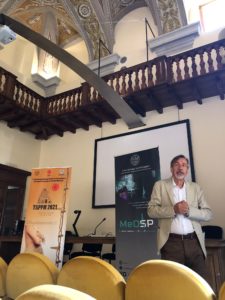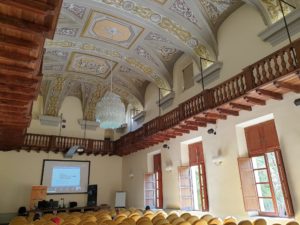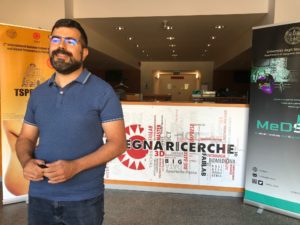Six days, six different openings. From time to time we will reveal the place and name of the lecturer who will carry out the opening lesson. We will try to make you discover enchanting places, even if virtually.
On this page, you will find more info on openings. Remember to consult it if you are curious! STAY TUNED…
Friday, July 16th from Anatomical Theater of University of Cagliari
“The current technological relevance in anatomical cadaver dissection for medical and surgical training: a modern concept of Anatomical Theater”
Marcello Trucas, MD
Department of Anatomical Science,
University of Rome “La Sapienza” (IT)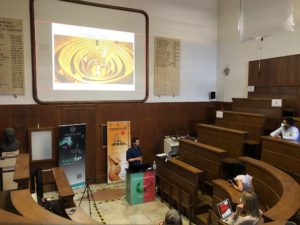
Marcello Trucas, MD, Clinical Pathologist, Ph.D. student at the Department of Anatomical Science – Sapienza University of Rome. He works for the national health system (ATS Sardegna) in the field of anticoagulant therapies for the treatment and prophylaxis of thrombo-embolic diseases. Member of the Italian Society of Anatomy and Histology, and Full Member of the Anatomical Society (UK), he is a component of the THESA-Theater Science Anatomy project: a working group within the Italian Society of the History of Medicine that deals with the historical research, cataloging and enhancement of European anatomical theaters.
Abstract: Italy is, in the western world, acknowledged as the cradle of anatomical science. The first anatomical theaters were born in our country and, in these institutions, medical-surgical knowledge was developed, new techniques were experimented and new discoveries were made. However, in the last 5 decades, anatomical dissection has been abandoned in most department of normal human anatomy of Italian universities namely for the great difficulty to obtain cadavers from hospitals, owing to the lack of adequate legislation. The new technologies in the field of virtual reality have tried to make up for this lack. However, despite their important contribution, there are areas of medical-surgical practice in which the teaching and training on normal human cadavers have a decisive impact on the quality of the formation of medical students. For these reasons, in the last few years, technological and didactic advances have been proposed to reinstate and update the concept of anatomical theater.
Monday, July 19th from the Aula Magna of the Faculty of Architecture of the University of Cagliari
Institutional greetings by Prof. Marco Cadinu, an expert of the history of architecture, full professor of Architecture at the University of Cagliari. Beyond welcoming us to the enchanting historical building that hosted the second day of the school, Professor Cadinu explained the history of this place, recently acquired by the University of Cagliari and where architecture students attend part of their lectures during the academic year.
Prof. Francesco Loy, Director of “Clemente Susini Wax Anatomical Models Museum”
Department of Biomedical Sciences,
University of Cagliari (IT)
Associate Professor of Human Anatomy in the Department of Biomedical Sciences, University of Cagliari, Italy. Since 2016, Scientific Director of the “Clemente Susini’s anatomical wax” museum of the University of Cagliari. Dr. Loy works in the Laboratory of Electron Microscopy and, as an expert of electron microscopy, his main research line is the study of the ultrastructure of major and minor human salivary glands and of their morphological and functional changes in relation to salivary secretion in health and disease.
Abstract: The Museum “Clemente Susini’s anatomical wax models” at the University of Cagliari, founded in 1991 by the professor of Human Anatomy Prof. A. Riva, exhibits 23 showcases with anatomical models manufactured in the La Specola Museum in Florence in the years 1803-1805 by Clemente Susini. The peculiarity of the waxes of Cagliari, related to other collections, is that they represent the artistic maturity of Susini and the result of his cooperation with the Sardinian anatomist Francesco Antonio Boi, who performed himself the dissections of the bodies. Each case bears the date and Susini’s signature, evidence of authorship absent in the other collections of Florentine waxes. Cagliari’s waxes are very realistic; in addition to the great artistic value, the models still maintain, from the anatomical point of view, two centuries after their completion, an extraordinary documentary and scientific relevance for medical students and historians of science.
Tuesday, July 20th from the House of Culture of the Municipality of Monserrato
Antonio Massidda
Emanuela Stara
Councilor for relations with the University of the Municipality of Monserrato
The building dates back to the last decade of the nineteenth century.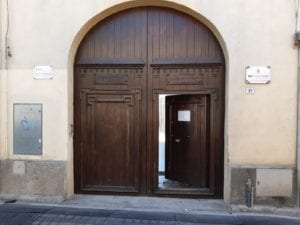 Originally, already owned by the Tinti family, it was the headquarters of the Fascist family during the Fascist period.
Originally, already owned by the Tinti family, it was the headquarters of the Fascist family during the Fascist period. 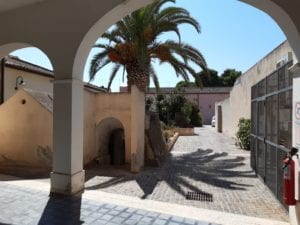 Located in the center of the city, it shows some typical elements of the architecture of the Campidanese houses such as the large internal courtyard. Inside the courtyard of the building, there is a bunker, evidence of the building’s role as an air-raid shelter during World War II. Later the fort was used by the municipal administration as a deposit for the records of the registry office. The very large size of the building favored, during the seventies, its use as the seat of the Cima State Middle School. In 2010, on the occasion of the presentation of an exhibition on Cesare Cabras and following the renovation by the Municipal Administration, the building was inaugurated with the current name of the House of Culture.
Located in the center of the city, it shows some typical elements of the architecture of the Campidanese houses such as the large internal courtyard. Inside the courtyard of the building, there is a bunker, evidence of the building’s role as an air-raid shelter during World War II. Later the fort was used by the municipal administration as a deposit for the records of the registry office. The very large size of the building favored, during the seventies, its use as the seat of the Cima State Middle School. In 2010, on the occasion of the presentation of an exhibition on Cesare Cabras and following the renovation by the Municipal Administration, the building was inaugurated with the current name of the House of Culture.
After the presentation by Antonio Massidda, the institutional greetings by Professor Emanuela Stara, Councilor for relations with the University of the Municipality of Monserrato.
Wednesday 21st July from the Eighteenth-century Hall of the Library of University of Cagliari
Maria Sandra Vargiu
Responsible for guided visits to the eighteenth-century library
Marta Cotelli
Archival-book restorer at ALES Arte Lavoro e Servizi S.p.A.
 The room, known today as the 18th century room, is a large rectangular room, about twenty meters long, eight wide, and seven and fifty meters high, with large windows. The double order of shelves, lacquered in a beautiful ivory color with gilded friezes, occupies the entire walls to the right and left of the room.
The room, known today as the 18th century room, is a large rectangular room, about twenty meters long, eight wide, and seven and fifty meters high, with large windows. The double order of shelves, lacquered in a beautiful ivory color with gilded friezes, occupies the entire walls to the right and left of the room.
The room was equipped with a first regulation in 1785, under Vittorio Amedeo III. In 1987 the hall was considered unusable and closed to the public. At the end of the nineties, a careful restoration project brought it back to its former glory. The skylights and the marble floor were restored. The hall was reopened to the public in 1999-2000, and from that moment, until today, it has taken on the role of a representative room, where various cultural events take place: conferences, book presentations, concerts and guided tours. Currently, inside the eighteenth-century room, 11,800 volumes belonging to the ancient heritage are kept in the hall: a large number of books on theology, philosophy, law, but also on scientific topics, history, geography, and literature.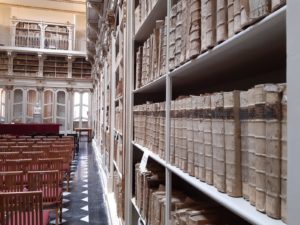
Knowing the ancient history of these walls allows us to celebrate the 400th anniversary of the University of Cagliari, which hosts TSPPM-2021. During the visit, we had the opportunity to have a look at several important books from the ancient heritage, as the Condaghe of Saint Nicola of Trullas, the Incunabolo of the Carta de Logu, which is a quite unique piece, or the first book printed in Sardinia, which is a Catechismo, printed on 1566, and the Constitution of the University of Cagliari, dated back to 1746, where the opening of the library was established with the possibility to get there for consulting the books. Another important piece of the library is the “Monstrorum historia cum Paralipomenis historiae omnium animalium” by Ulisse Aldrovandi, dated 1659, where, in volume XXX, II part, there is an interesting section for the school from pages 43 to 70 (you can browse the book here: https://amshistorica.unibo.it/127#)
Thursday 22nd July from Aula Magna of the Rectorate – University of Cagliari
Martina D’Asaro
Department of History, Cultural and Territorial Heritage,
University of Cagliari (IT)
 Graduated in History of Contemporary Art at the University of Cagliari she is now a PhD student in History, Cultural Heritage, and International Studies. Her current research focus is the Sardinian cultural background in relation to the socio-political assets of the twentieth century and how this is perceived at national and international level. She is editorial assistant for ABside, the University of Cagliari journal of History of Art. After a post-master’s degree in Theory and Methods of Art History, obtained at the Rome Guglielmo Marconi University for the specific training of teachers, she deepens communication strategies in the cultural field. As a member of the Vestigia Unica team, the permanent Lab of Teaching and Communication of Cultural Heritage of the University of Cagliari, she collaborates in activities linked to the Third Mission of the University. She deals with the enhancement of cultural heritage, cooperating with local bodies and associations. After a period of study and work in UK during which she obtains the title of Italian teacher, she becomes board member of Clèmatis Cultural Association, which operates in the field of historical, archaeological and identity heritage to encourage the participatory processes of the community in the spirit of the Faro Convention.
Graduated in History of Contemporary Art at the University of Cagliari she is now a PhD student in History, Cultural Heritage, and International Studies. Her current research focus is the Sardinian cultural background in relation to the socio-political assets of the twentieth century and how this is perceived at national and international level. She is editorial assistant for ABside, the University of Cagliari journal of History of Art. After a post-master’s degree in Theory and Methods of Art History, obtained at the Rome Guglielmo Marconi University for the specific training of teachers, she deepens communication strategies in the cultural field. As a member of the Vestigia Unica team, the permanent Lab of Teaching and Communication of Cultural Heritage of the University of Cagliari, she collaborates in activities linked to the Third Mission of the University. She deals with the enhancement of cultural heritage, cooperating with local bodies and associations. After a period of study and work in UK during which she obtains the title of Italian teacher, she becomes board member of Clèmatis Cultural Association, which operates in the field of historical, archaeological and identity heritage to encourage the participatory processes of the community in the spirit of the Faro Convention.
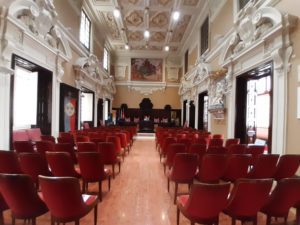 Abstract: Cataloguing the private archive of the artist Filippo Figari (Cagliari 1885- Roma 1973) I had the opportunity to read his manuscripts and to fully realize his vision on the Sardinian’s popular culture; he wanted people to clearly recognize the pride of its inhabitants and traditions through his paintings. The Aula Magna of the Rectorate of Cagliari hosts a large ornamental set-up including painted panels where Figari precisely expresses those feelings: working women to symbolize earth’s and family’s resources, and myths and allegories to emphasize the importance of the University studies. In the year of the 400th anniversary of the foundation of the Athenaeum I propose a brief reading of his pictorial intervention in the Aula, whose current aspect dates to 1926 when the works commissioned by the Rector Roberto Binaghi were completed.
Abstract: Cataloguing the private archive of the artist Filippo Figari (Cagliari 1885- Roma 1973) I had the opportunity to read his manuscripts and to fully realize his vision on the Sardinian’s popular culture; he wanted people to clearly recognize the pride of its inhabitants and traditions through his paintings. The Aula Magna of the Rectorate of Cagliari hosts a large ornamental set-up including painted panels where Figari precisely expresses those feelings: working women to symbolize earth’s and family’s resources, and myths and allegories to emphasize the importance of the University studies. In the year of the 400th anniversary of the foundation of the Athenaeum I propose a brief reading of his pictorial intervention in the Aula, whose current aspect dates to 1926 when the works commissioned by the Rector Roberto Binaghi were completed.
Friday 23rd from Sardegna Ricerche – Polaris Sardinian Scientific and Technological Park, Pula
Andrea Duranti is a Communication Specialist at Sardegna Ricerche, the agency of the Regional Government of Sardinia for innovation and technology transfer. He has a supervision role in the activities of Sardegna Ricerche’s science centre 10Lab that is located within the Science and Technology Park of Pula (CA).
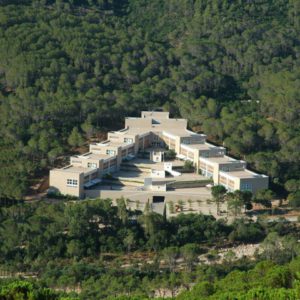 Abstract: Sardegna Ricerche is a regional agency that plays a pivotal role in the further development and support of the innovation ecosystem of Sardinia, an island that was the cradle of the World Wide Web in the 1990s and achieved considerable results in the field of biomedical research. The agency is also the founder and manager of the Science and Technology Park of Sardinia. The presentation will introduce the audience to the main milestones in the innovation history of Sardinia and to the services provided by Sardegna Ricerche to startups, innovative SMEs and researchers.
Abstract: Sardegna Ricerche is a regional agency that plays a pivotal role in the further development and support of the innovation ecosystem of Sardinia, an island that was the cradle of the World Wide Web in the 1990s and achieved considerable results in the field of biomedical research. The agency is also the founder and manager of the Science and Technology Park of Sardinia. The presentation will introduce the audience to the main milestones in the innovation history of Sardinia and to the services provided by Sardegna Ricerche to startups, innovative SMEs and researchers.

